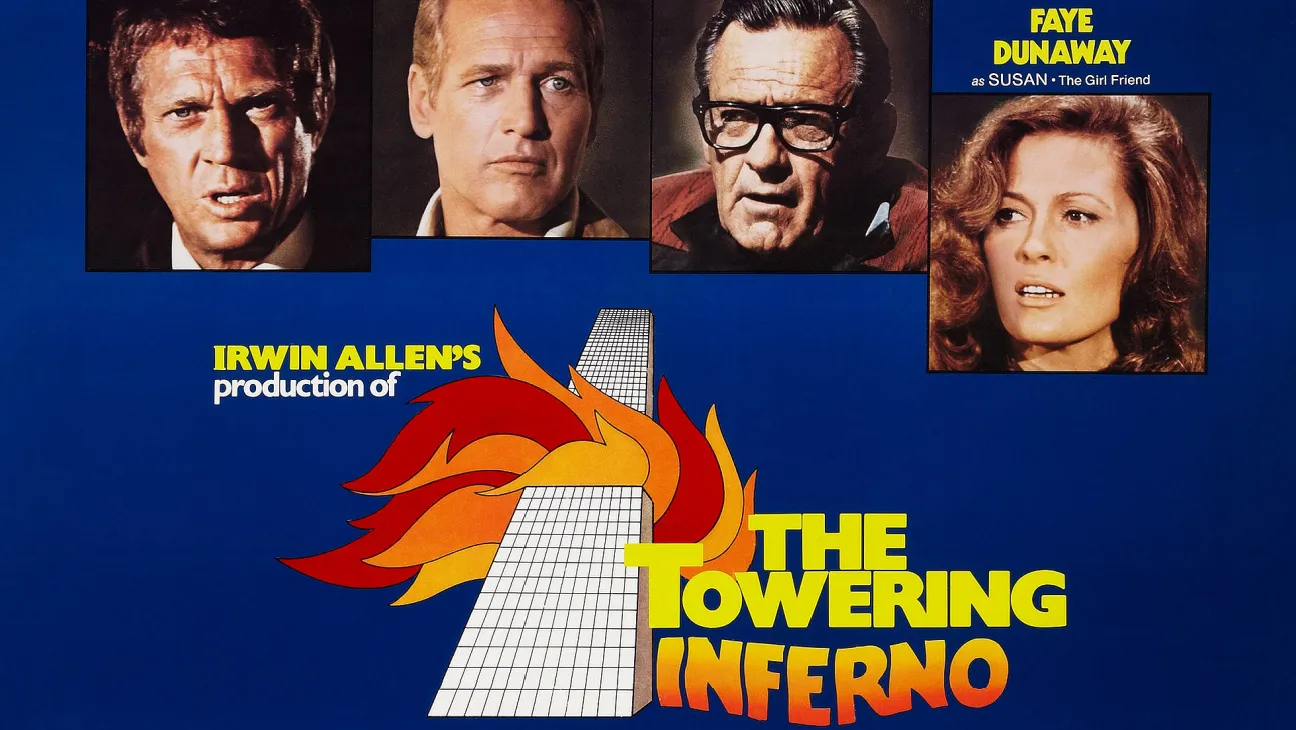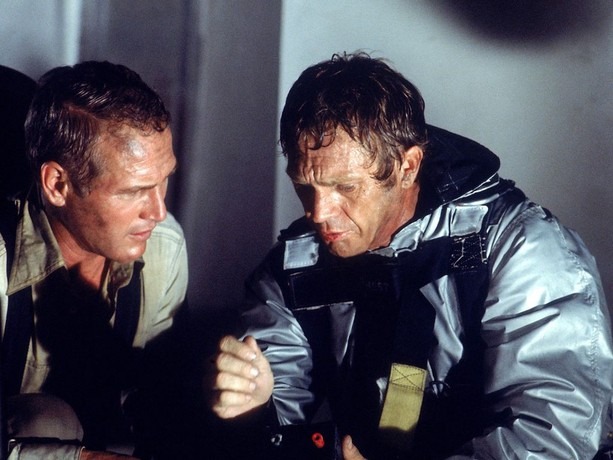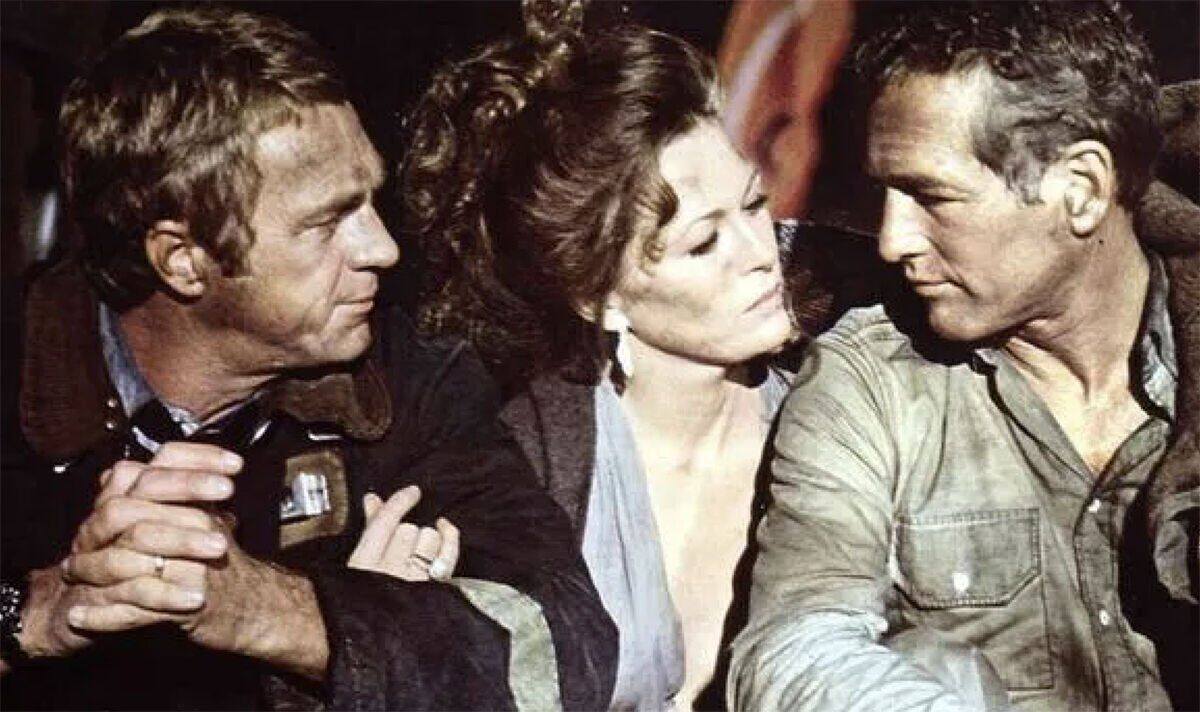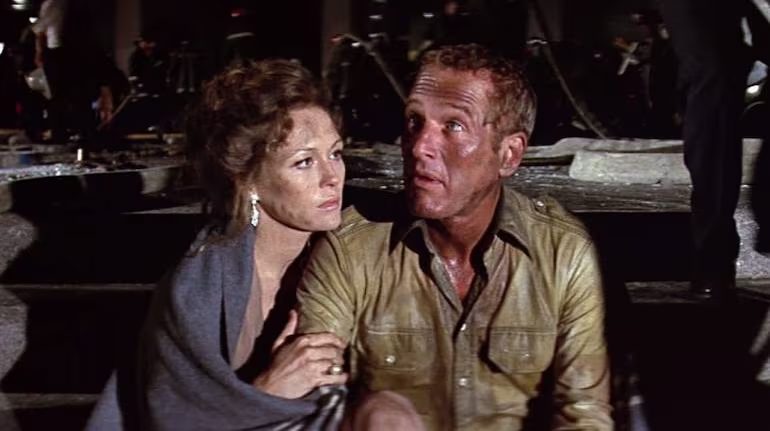The Towering Inferno (1974)

The Towering Inferno (1974) is a thrilling American disaster film directed by John Guillermin and produced by Irwin Allen. Featuring an all-star cast including Paul Newman, Steve McQueen, and Faye Dunaway, the film quickly became a landmark in the disaster genre. Combining heart-pounding action with human drama, The Towering Inferno explores the terrifying consequences of a massive fire engulfing a newly constructed skyscraper. Adapted from Richard Martin Stern’s novel The Tower and Thomas N. Scortia’s The Glass Inferno, the film is a gripping story of survival and heroism.
The plot of The Towering Inferno revolves around a massive fire that breaks out in the opening of a state-of-the-art skyscraper in San Francisco. The building is a symbol of modern engineering, but disaster strikes when a fire starts on one of the upper floors. As the blaze spreads rapidly throughout the building, chaos ensues. The film follows multiple characters, including architect Doug Roberts (Paul Newman), firefighter Mike O’Halloran (Steve McQueen), and building manager James Duncan (William Holden), as they struggle to save themselves and others. The escalating danger, personal stakes, and moral decisions make for a tense and suspenseful narrative.
In The Towering Inferno, the character development plays a key role in the film’s emotional depth. Doug Roberts, portrayed by Paul Newman, is a dedicated architect who takes responsibility for the safety of the building, feeling personally accountable for the disaster. Steve McQueen’s Mike O’Halloran, a brave firefighter, becomes the leader of the rescue operation, balancing professional expertise with deep empathy for the trapped victims. Other characters, such as Faye Dunaway’s Susan, bring human drama to the story as relationships evolve under the stress of the catastrophe. The contrast between personal agendas and the collective need for survival creates an intense emotional arc that heightens the film’s impact.

The cinematography and visual effects in The Towering Inferno were groundbreaking for its time, contributing to the film’s sense of realism and urgency. The towering inferno is depicted with impressive practical effects, using miniatures, real fire, and large-scale set designs to create a believable disaster. The chaotic visuals of the burning skyscraper, with people trapped on the upper floors and smoke billowing from every direction, heighten the suspense and tension. The use of wide shots to show the scale of the disaster and close-ups to focus on individual emotions adds to the film’s effectiveness in immersing the audience in the horror of the situation.

The central themes of The Towering Inferno include human resilience, heroism, and the power of cooperation in the face of overwhelming danger. The film explores the idea of individuals coming together despite personal differences to fight a common enemy—disaster. The struggle for survival forces characters to confront their deepest fears and make life-or-death decisions. The movie also touches on the fragility of human ambition, as the grandiosity of the skyscraper becomes a symbol of the hubris that often accompanies modern development. Ultimately, the film highlights the importance of humility, teamwork, and perseverance in the face of catastrophe.

In conclusion, The Towering Inferno is a landmark film in the disaster genre that successfully combines thrilling action with deep human drama. The strong performances from the star-studded cast, especially Paul Newman and Steve McQueen, create a compelling narrative of survival and sacrifice. The film’s groundbreaking special effects and gripping cinematography immerse the audience in the terrifying reality of a skyscraper engulfed in flames. With its themes of resilience and cooperation, The Towering Inferno remains a classic, offering both excitement and emotional depth in a tale of collective struggle against an unforgiving disaster.











